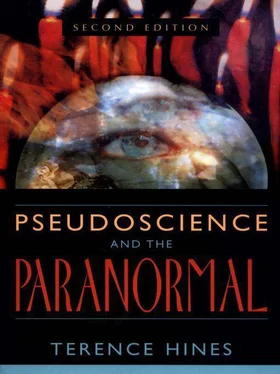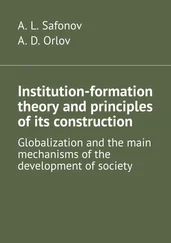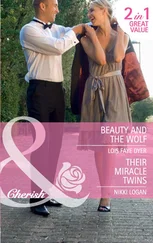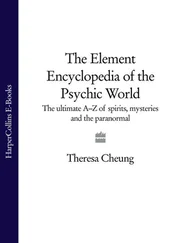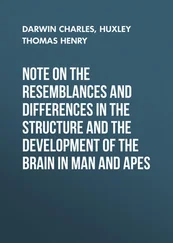CLOSE ENCOUNTERS OF THE FIRST KIND
The most common type of UFO report is the so-called close encounter of the first kind (CEI). It consists of a sighting of a UFO, but with no physical evidence of the object left behind. Nonetheless, a CE I can be quite impressive, especially when the witnesses are trained, reliable, stable individuals.
The earliest UFO sightings—the six-month wave of sightings of a “mysterious airship” between November 1896 and April 1897—fall into this category. In the UFO literature, the “airship” is almost always reported to have been a dark, cigar-shaped object (Jacobs 1975). In a careful investigation of this wave of sightings based on the newspaper reports of the day, Cohen (1981) has found that the popular descriptions of this wave of sightings are much exaggerated. In the best traditions of constructive perception, what was usually seen in the sky was not a dark, cigar-shaped object, but merely a light. It was “simply assumed that the lights were attached to the mystery airship. People sometimes added that they thought they saw a dark shape above the light which they took to be the body of the airship, but most witnesses seemed to indicate that this dark body, if they saw it at all, was vague and indistinct” (p. 186).
The light itself was probably the planet Venus. Venus is the brightest of all the planets in the night sky and is responsible for more UFO reports than any other single object (Hendry 1979). Sheaffer (cited in Cohen 1981) has calculated that Venus was at its brightest in March 1897. The “mysterious airship” sightings were most numerous just a few weeks later, in April 1897.
Hoaxes also played a major role in the airship mystery. Cohen (1981) notes that “the papers contain scores of reports of airship sightings stimulated by jokers who released balloons with some sort of flaming material attached, or flew lighted kites” (pp. 189–90). Some of these hoax reports may themselves have been hoaxes, but many were certainly real. There were even crash hoaxes in which bits of mechanical apparatus were scattered about and it was claimed that these were the remains of the crashed ship. Hoaxing by railroad telegraph operators, who reported an inordinate number of sightings, was also a factor. The Des Moines Leader editorialized on April 11, 1897, that the airship reports amounted to the “most successful fakes in an era of such successes” due to the false reports of railroad telegraph operators (p. 192).
As noted above, one of the major arguments put forward by proponents of the view that UFOs are extraterrestrial in origin is the large number of impressive reports by reliable witnesses. However, such witnesses are just as liable as anyone else to the processes of constructive perception and thus to the attendant misidentification of known objects as UFOs. Klass (1981) has described several instructive cases. For example, who better to correctly identify objects in the sky than an experienced astronomer? One Arizona astronomer with “thousands of hours of experience in observing the night sky” (p. 312) saw, on the night of October 5,1973, a most “striking and unusual” UFO. He wrote a description of what he had seen and, being unable to identify it immediately, attempted to discover what it might have been. His investigation revealed that he had seen “the rocket-engine plume from a large air-force Titan 2 intercontinental ballistic missile being launched from Vandenberg Air Force Base, California; more than five hundred miles away ” (p. 312). Not only had this experienced astronomer failed to recognize what he was seeing, he also found that his written report contained “several inaccuracies and inconsistencies” due to “the usual difficulties of perceiving and remembering an unusual, rapidly changing phenomenon. This report… is perhaps typical of the reliability of a UFO observation by a trained observer” (p. 312).
Another case reported by Klass (1981) is extremely impressive. There were multiple independent witnesses, several UFOs appeared, and, in one instance, the presence of the UFOs seemed to terrify the dog of one of the witnesses. These strange events occurred on the night of March 3, 1968. In Columbus, Ohio, that night a science teacher walking her dog saw three small UFOs, which she observed through binoculars. They were flying in formation, she reported, and seemed to be “under intelligent control.” Her dog appeared to be “frightened to death” and lay on the ground whimpering. On the same night three witnesses in Nashville, Tennessee, reported seeing a huge metal saucer with many square windows glowing from the inside. The estimated altitude was about one thousand feet. The third report for this active evening came from Indiana, where a cigar-shaped UFO was seen that had a rocket-type exhaust and windows.
These reports seem to indicate an impressive phenomenon. What was going on in the sky that night? Klass (1981) reports that on that night a Russian Zond 4 launch rocket reentered the atmosphere. It “reentered on a southwest-to-northeast trajectory that took it across Tennessee, Ohio, Pennsylvania, and southwestern New York State. As the rocket reentered it broke up into many luminous fragments as it traversed the atmosphere at very high speed” (p. 314). Many other people saw this spectacular reentry that night. It is important to note that the UFO witnesses did not see the reentry in addition to the UFOs. In this case we see the power of constructive perception. The witnesses reported windows, an exhaust, and a huge saucer—all details that weren’t there. These additions and embellishments were purely the creation of the witnesses’ minds—not because they were crazy, drunk, or stupid, but because that is the way the human brain works. It can be said that these witnesses did perceive what they said they did. This doesn’t mean, however, that what they perceived was the same as what was really there. Note, too, how inaccurate was the estimate of the object’s altitude made by the witness from Nashville, Tennessee. The witness estimated about one thousand feet while, in fact, the reentering rocket was miles high and scores of miles away. This type of gross inaccuracy frequently occurs when one sees a light in the sky with no background, as is the case at night. Under these circumstances, the many cues the brain uses to judge distance are not present, so no accurate basis for the judgment exists.
But what about the science teacher’s dog, whimpering on the ground? This witness certainly attributed the dog’s behavior to the three UFOs she saw through her binoculars. But if the objects she really saw were miles away, how can one explain the dog’s behavior? Actually, it can be explained very simply: It was a cold night and, as the witness stated later, her dog hated the cold. Given the extra time no doubt taken by the witness to watch the UFOs, the dog was most probably cold and simply wanted to go home. UFO witnesses commonly attribute to the UFO almost anything that happens while they are observing the UFO, ignoring more prosaic explanations.
Pilots are often thought to be among the most reliable witnesses when it comes to reporting things seen in the skies. On June 5, 1969, near St. Louis, Missouri, a UFO sighting occurred that involved pilot witnesses in three separate aircraft. A “squadron” of UFOs was reported, and two UFOs were seen on radar at the same time. A Federal Aviation Administration observer in one of the commercial aircraft involved estimated that the group of UFOs was only several hundred feet away from his aircraft and that they were going to strike the aircraft. He reported that the UFOs were colored like “burnished aluminum.” They were said to be shaped like a “hydroplane.” After this alarming incident was over, it was reported to the tower at St. Louis airport. The tower reported that there were two “unidentified targets” on radar. These targets were to the west of the first aircraft; the UFOs had been heading west. At this point a second commercial aircraft called to report that the UFOs had passed the aircraft moments previously and were still headed west. According to the pilot, the squadron of UFOs had “nearly collided with the aircraft,” but avoided disaster at the last second by maneuvers that suggested they were “under intelligent control.”
Читать дальше
